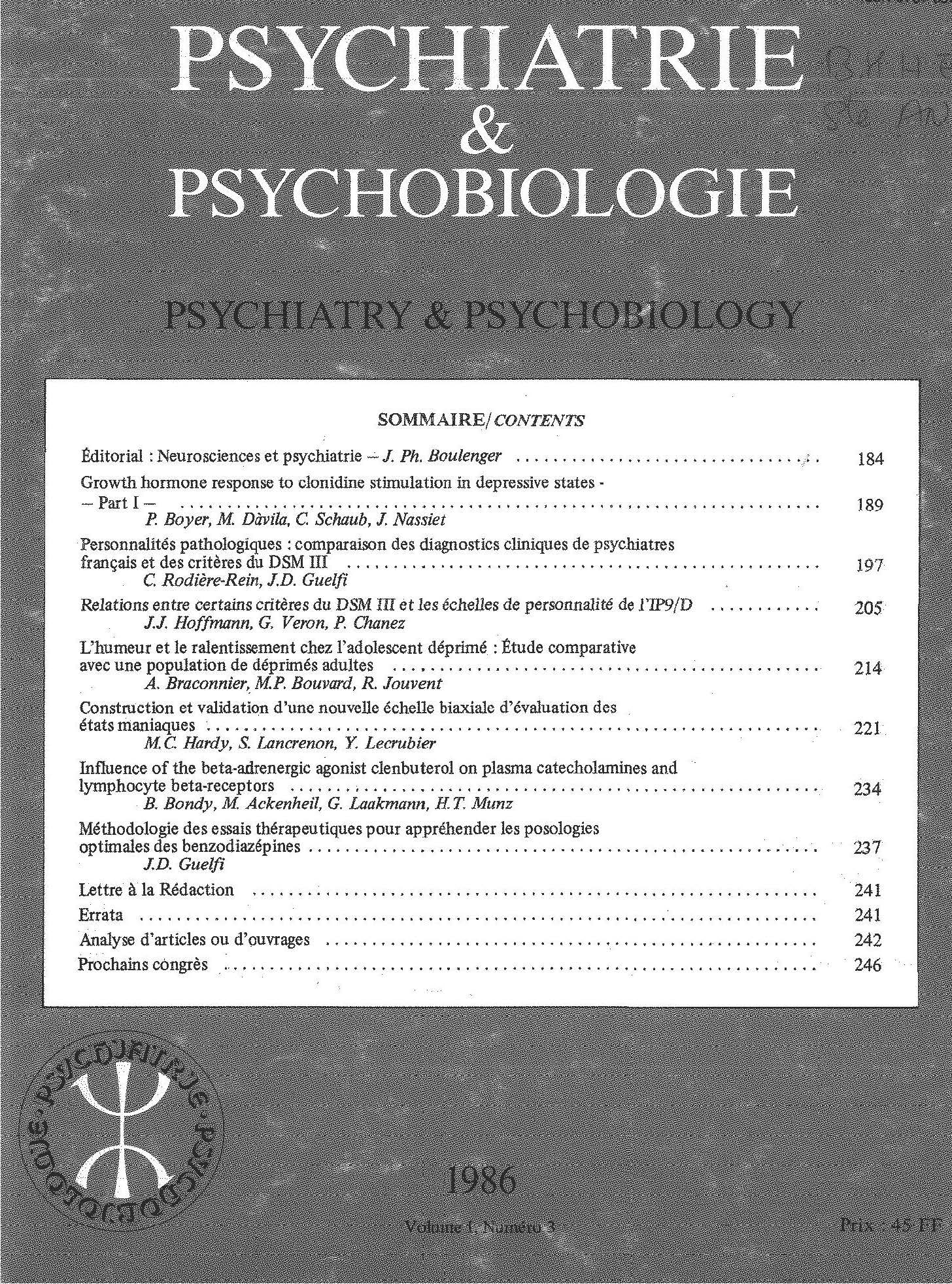No CrossRef data available.
Article contents
Anxiété sociale, problèmes diagnostiques et thérapeutiques
Published online by Cambridge University Press: 28 April 2020
Résumé
L'anxiété sociale traverse toute la pathologie psychiatrique et est l’une des plaintes les plus fréquemment rencontrées dans notre Département des Thérapies Comportementales. Les catégories : phobie sociale et personnalité évitante du DSM III s’y réferent spécifiquement. Certains troubles affectifs semblent aussi liés à l’interaction sociale. Les critères diagnostiques et les diagnostics différentiels à l’intérieur de ce groupe hétérogène sont analysés d’après le DSM III et à l’aide d’autres méthodes d’évaluation.
Une évaluation critique de ces méthodes est faite, en vue de les adapter aux critères de trois types de troubles : • la réaction anxieuse psychophysiologique dans la phobie sociale, • les comportements d’évitement dans la personnalité évitante, • les distorsions cognitives dans la dépression atypique.
Une revue de traitements chimiothérapiques, cognitifs et comportementaux utilisés dans les trois types de troubles décrits antérieurement, est présentée.
Summary
Social anxiety is present in many psychiatric disorders and is one of the more frequent complains encountered in our Department of Behavioral Therapy. The “social phobia” and “avoidant personalily” categories of the DSM III refer specifically to this phenomenon. Certain affective disorders likewise seem to be related to social interaction. The diagnostic criteria and differential diagnoses within this heterogeneous group are analyzed according to the DSM III and using other assessment methods.
Critical evaluation of these methods is provided, with a view to adapting them to the criteria of three types of disorders: • the anxious psychophysiological reaction in social phobia, • avoidant behavior in the avoidant personality, • cognitive distorsions in atypical depression.
The chemotherapy, cognitive and behavioral treatments used in these three types of disorders are reviewed.
Keywords
- Type
- Research Article
- Information
- Copyright
- Copyright © European Psychiatric Association 1987



Comments
No Comments have been published for this article.